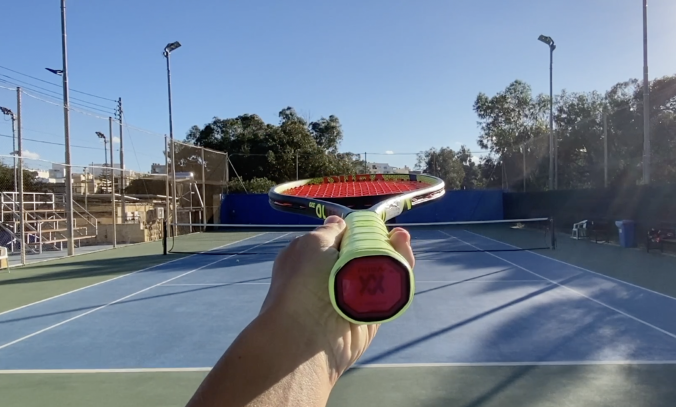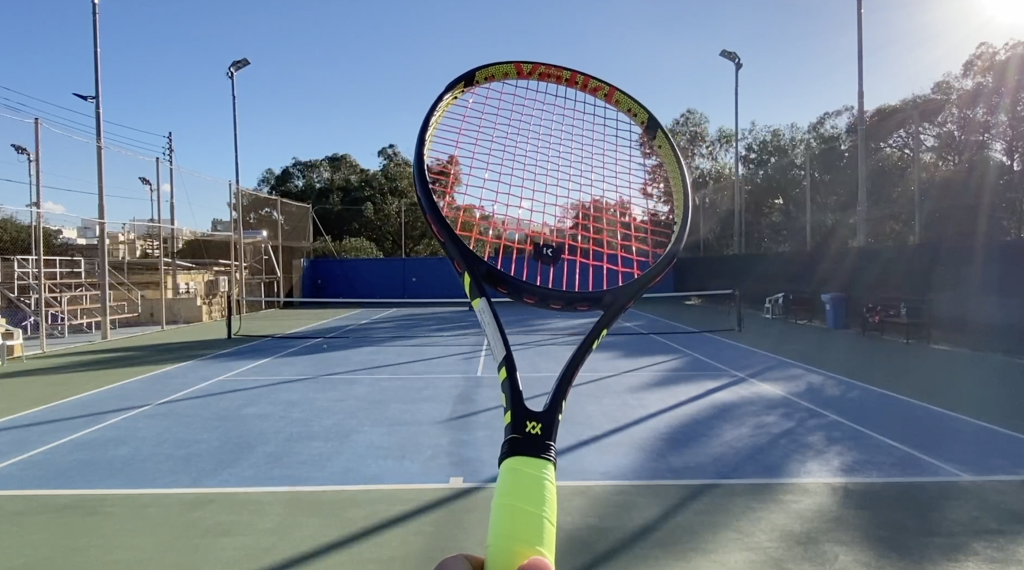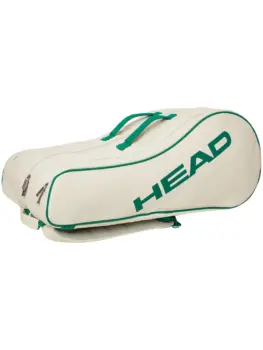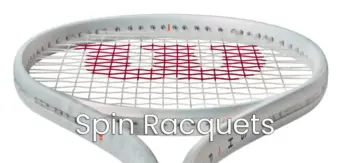The Volkl V-Cell 10 320 is an interesting racquet. On the heavier side, with a maneuverable swing weight and higher stiffness.
I was intrigued by the specs of the Volkl V-Cell 10 320. What do you get if you make a 320g unstrung racquets, keep the swing weight on the low side and add a stiffer layup for free power? That is what this review is all about.
Design
Design is always subjective. The racquet looks pretty good to me, it’s beehive-inspired with the pattern running inside the beam. One thing irked me, however – there was a black gap on 10, 2, 4, and 8 on the racquet head, which kind of “stole my eye” as I was hitting the ball. I found it distracting while playing. Maybe I’ve just lost my mind, but I rarely get annoyed by the visual parts of the racquet while playing.
Technologies
V-Cell = cellulose-based carbon placed in the shaft and head to improve comfort and stability. Seems to work similarly to foam-filling by the sound of it.
REVA = Dampening in the handle, similar to what Yonex does with their Vibration Dampening Mesh.
|
Head Size:
|
98 in / 632 cm
|
|
Length:
|
27in / 68,5cm
|
|
Strung Weight:
|
335g / 11,8oz
|
|
Unstrung Weight:
|
320g / 11,3oz
|
|
Balance:
|
31,98cm / 7 pts HL
|
|
Unstrung Balance:
|
31,5cm/9 pts HL
|
|
Swingweight:
|
319
|
|
Stiffness:
|
67
|
|
Beam Width:
|
20,5mm / 22,5mm / 21mm
|
|
Composition:
|
VCell/Graphite
|
|
Racket Colours:
|
Black
|
|
Grip Type:
|
Volkl VSENSE Grip
|
|
String Pattern:
|
16 Mains / 19 Crosses
Mains skip: 8T,8H
|
|
Tension:
|
22-27kg / 50-60lb
|
What stands out when you look at the specs? Well, it’s an interesting mix of a stiffer frame, with decent mass but lower swing weight. It kind of finds its own category as most heavier racquets are either softer or have a higher swing weight.
Pretty fun to play, but I did prefer its lighter 300-gram brother for the whippiness and room for customization.
This racquet is relatively comfortable for a 67 RA strung racquet though so I wouldn’t be worried about high stiffness if you use the right string setup.
How does it play?
It’s an interesting frame. Pretty user-friendly for its weight class with the low swing weight. Flows through the air easily, offers an interesting blend of power and control. It suffers a little bit of an identity crisis. Is it a control frame? Is it a heavier power frame?
It definitely lands on the side of control in the end, but I don’t find quite the confidence I need to go for my shots like I can with some other racquets in the same spec range like the Yonex VCORE Pro 97 D or the HEAD Prestige MP. The tighter patterns of those racquets work in their favor, while this one neither offers great spin potential nor directional control.
It handles volleys well. Touch shots are no problem. You can get decent pop on serve. I just lack a little bit of control, which is what I would normally look for in a racquet coming in at 320g.
Summary
I think there are a bunch of attacking players out there that will fall in love with the Volkl V-Cell 10 320, but it didn’t quite capture my interest in the way I had hoped it would.
Either I want a faster racquet to whip up more spin or a tighter pattern for better control. It kind of lands in the middle of these categories. For some that could be a great thing, for me, it didn’t quite do the trick.
If you’re interested in the Volkl V-Cell 10 320, check out my affiliates: Tennis Warehouse Europe, Tennis Warehouse or Tennis Only.

















Although the SW of this racket is relatively normal, I feel that SW doesn’t give the whole picture regarding the ease of swinging a racket. Although this may feel the same as other rackets once the head is in motion, getting the head moving will take more effort because of the static weight. Therefore, I my experience it’s best to add the SW and static weight figures together and divide by 2. Hence this frame would be (319 + 320) / 2 = 319.5. But in comparison a lighter racket with similar SW like the TF RS 300, we get (318+300) / 2 = 309. So I would guess that the TF was overall easier to swing despite having similar SW (?). Should a more nuanced calculation for ‘swing-feel’ or manoeuvrability be developed?
Adding SW to static weight and dividing by two is not the way to go, for at least two reasons:
1. SW and static weight are given in different units so we cannot be adding them that freely
2. When you calculate dynamic weight (SW), static weight is part of that formula, which makes static weight an independent variable to SW being the dependent variable. Therefore, again, adding them and dividing the result by two, gives us no viable answers. In other words, swingweight already incorporates static weight into its final result, so actually, when you look for a measure that combines both static and dynamic weight – swing weight is exactly that. It’s mathematically impossible that a racquet with a higher SW swings faster than a racquet with a lower SW, no matter how static weights of these two racquets compare. Now, I am not talking here about how you feel they swing, but how they actually do, based on objective measurement of the swing weight.
Interesting racquet I want to try. I think there should be more of these hybrid frames. Players racquets with more power/spin. I think the opposition between power racquets and control racquets is a false one. Many people want a comfortable and hefty enough power/spin racquet, not a light and bright yellow one.